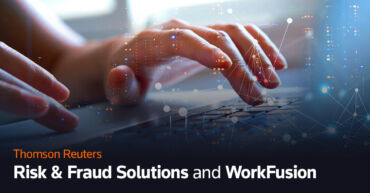Government agencies that manage unemployment insurance programs are under immense pressure to deliver these critical public benefits quickly and accurately, often with constrained resources — and this makes preventing, detecting, and ultimately investigating potential fraud a very challenging process.
Indeed, many of these agencies continue to deal with numerous ongoing hurdles, including the loss of critical talent during the pandemic, the difficulty of recruiting new talent, and modernizing the technology and older legacy systems they currently use. Worse yet, illicit actors are increasingly targeting government benefit programs and have become even more sophisticated at using the latest technology to make their fraudulent actions even more difficult to detect and avoid.
This all comes at a time when the stakes in increasing the effectiveness of insurance fraud detection and combating unemployment insurance fraud couldn’t be higher. The recent volume of unemployment insurance investigations has grown to more than 190,000 cases, a level that has strained many agencies. Recently, the U.S. Government Accountability Office (GAO) reported that there were $19 billion in incorrect unemployment insurance payments made in fiscal year 2022, and that was on top of another GAO report from earlier this year that showed more than $60 billion may have been lost to fraudulently claimed unemployment insurance benefits during the pandemic. And while some new government programs are allocating funds to agencies to help them fight fraud, many are still facing an uphill battle.
Primary to this fight is how to shift agencies’ strategy to one of proactive unemployment insurance fraud prevention, rather than reactive insurance fraud detection and investigation after the fraud has been committed. In fact, new Thomson Reuters Institute research shows that many government agency fraud specialists and investigators said they are spending less time than they desire in the critical prevention stage.
Leveraging technology in the fight
Clearly, the integration of modern technology- especially tools driven by artificial intelligence (AI) and advanced machine learning techniques — can help improve the efficiency, accuracy, and security in how government agencies administer unemployment benefits programs. For example, data analytics can help agencies detect previously unrecognizable patterns of fraudulent behavior. And by analyzing large amounts of data, agencies can identify suspicious activities, such as multiple claims from the same IP address or other unusual patterns in claim submissions.
However, one of the most powerful AI-driven tools is the use of advanced identity verification systems to ensure that those individuals claiming the benefits are actually who they say they are. These advanced systems may include biometric authentication, facial recognition, and multi-factor authentication to reduce the risk of identity theft.
In fact, biometric technologies such as facial recognition and behavioral analytics — methods that can detect identifying behavior such as how an individual holds a device — can be powerful weapons in the fight against fraud. And other tactics, such as matching social media images (such as selfies) in real-time with government-issued identification documents also can significantly help agencies identify fraudulent activity before benefits are paid out.
Adapting AI-driven technology also can help agencies complement more advanced methods with such common practices as cross-checking Social Security numbers and other identifying documents, such as a driver’s license or passport, against official databases to ensure all documents match the individual’s name and other identifying details.
With these tools, agencies can then more easily cross-check the applicant’s employment history and income details with their employers in order to verify their eligibility for unemployment benefits and ensure the individual is not already employed somewhere else.
Government agencies also need to continuously update and improve their identity verification methods to stay ahead of continually evolving fraud techniques. Collaboration with cybersecurity experts, third-party identity verification services, and other government agencies can also provide valuable insights and best practices in enhancing insurance fraud detection and combating unemployment insurance fraud and abuse.
Agencies should also remember to conduct random audits of benefit recipients to verify the accuracy of their claims and eligibility, which itself can act as a deterrent for potential fraudsters. They should also educate the public about the consequences of fraud and abuse and how the various identity verification processes the agencies use actually work. Even a strong public awareness program can discourage potential illicit actors from attempting to commit unemployment insurance fraud in the first place.
Conclusion
While more than two-thirds of government agencies said they were concerned that they will continue to see more fraud in the future, many are readying for the fight by utilizing a balanced approach that combines their own agents’ expertise, technology, and collaboration with other agencies.
And those agencies fighting back with AI-driven tools and techniques may be best equipped to reduce the amount of fraud committed, even if they cannot eliminate unemployment insurance fraud entirely. Indeed, by being proactive with advanced AI-driven insurance fraud detection measures, agencies can make real progress in preventing these crimes before they happen, thus ensuring that eligible individuals receive the public benefits to which they are entitled.
Thomson Reuters is not a consumer reporting agency and none of its services or the data contained therein constitute a ‘consumer report’ as such term is defined in the Federal Fair Credit Reporting Act (FCRA), 15 U.S.C. sec. 1681 et seq. The data provided to you may not be used as a factor in consumer debt collection decisioning, establishing a consumer’s eligibility for credit, insurance, employment, government benefits, or housing, or for any other purpose authorized under the FCRA. By accessing one of our services, you agree not to use the service or data for any purpose authorized under the FCRA or in relation to taking an adverse action relating to a consumer application.
 AI @ Thomson Reuters
AI @ Thomson Reuters
Redefining your work with the power of generative AI.
Sign up for early access to insights, updates, and all things AI @ Thomson Reuters.











